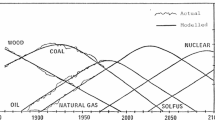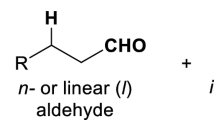Abstract
The translation of the potentially hazardous, highly exothermic alkoxylation reaction to the rapid, safe and completely reliable industrial technology that it is today has been a noteworthy development. Commercially, the reactions of ethylene oxide with fatty acids are conducted in the presence of alkaline catalysts at temperatures above 100 C. The reaction proceeds in two steps. The first step is relatively slow and the product is predominantly ethylene glycol monoester. The second step occurs after approximately one mole ethylene oxide is reacted and all of the fatty acid is consumed. An increase in the ethylene oxide addition rate is observed, and polyethylene glycol esters are formed. Rapid transesterification also occurs, and the molar proportions of monoester, diester, and free polyol in the product approaches those predicted by the equilibrium assuming random esterification of the polyethylene glycol hydroxyl groups. The composition of polyoxyethylated fatty acids is similar to that obtained by the direct esterification of fatty acid with polyethylene glycol. The distribution of the ethylene oxide chain lengths in the polyethylene glycol portion of the product can be approximated assuming random addition of the epoxide.
Similar content being viewed by others
References
Schönfeldt, N., “Surface Active Ethylene Oxide Adducts,” Pergamon Press, 1969.
Schick, M.J., “Nonionic Surfactants,” Marcel Dekker, 1967.
French Patent 664,261.
Wrigley, A.N., F.D. Smith, and A.J. Stirton, JAOCS 34:39 (1957).
Malkemus, J.D., JAOCS 33:571 (1956).
Davidsohn, A., and B.M. Milwidsky, “Synthetic Detergents,” 6th Edition, p. 144, John Wiley and Sons, New York, 1978.
Ethylene Oxide Technical Bulletin, Jefferson Chemical Company, 1956.
Wilson, R.A., U.S. Patent 2,586,769.
Stockburger, G.J., and J.D. Brandner, JAOCS 43:6 (1966).
Wrigley, A.N., F.D. Smith, and J.D. Stirton, Ibid. 36:34 (1959).
Satkowski, W.B., S.K., Huang, and R.L. Liss, “Nonionic Surfactants, Edited by M.J. Schick, Chapter 5, Marcel Dekker, 1967.
Flory, P.J., JAOCS 62:1561 (1940).
Birkmeier, R.L., and J.D. Brandner, J. Agric. Food Chem. 6:471 (1958).
Author information
Authors and Affiliations
About this article
Cite this article
Stockburger, G.J. Ethoxylation. J Am Oil Chem Soc 56, 774A–777A (1979). https://doi.org/10.1007/BF02667442
Issue Date:
DOI: https://doi.org/10.1007/BF02667442




